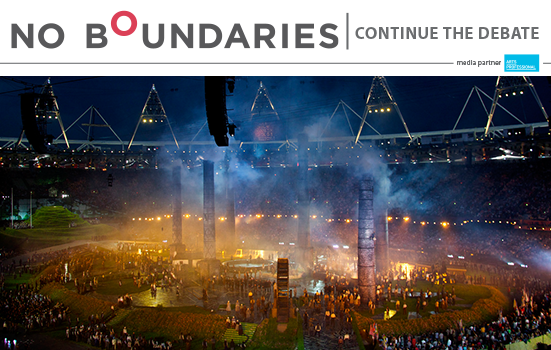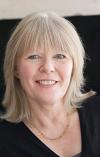If the arts are to be relevant to people’s lives, the creative experience and access to subsidy must be available to more than the privileged, and perceived barriers between professional and nonprofessional artists must be broken down, says Vikki Heywood in a prologue to her speech at the No Boundaries conference.

Nick J Webb via Creative Commons (cc by 2.0)
Over the last twenty years funding for the arts has become compelled to demonstrate increased value. In a world of transactional exchanges and restricted public investment, subsidy for the arts (like any other area of economic activity) requires a measurable value that can be set against tangible targets and indicators.
At the beginning of my career, I didn’t question the drive to increase this value driven approach but sooner or later came a creeping realisation that there needs to be some alternative to an ever increasing dominance of measureable impact as proof of artistic value.
We must go back to our roots and begin a reanalysis. Why? Because we are the privileged custodians of public and private money and will always rightly be challenged on the validity of that spending against other public investment. Why have we not found a better way of articulating it? Because artists and audiences have not led the thinking.
Through the two-year Warwick Commission and the many other approaches, including the upcoming State Of The Arts conference ‘No Boundaries’ and the AHRC Cultural Value project many of us are investigating the real, complex and holistic value of the arts. We need to do this because we know that the creative process can and does make the world a better place and because we need to express and communicate this strongly in a climate where pressure on public spending is immense.
The formula we appear to be using is:
Art for Arts Sake + Measurable Impact = Value
“Art For Arts Sake” is relatively simple. The creative act is a self-fulfilling process that can be shared and celebrated. The artist is driven by a creative desire that cannot be communicated by other means. We the “audience’ live an enriched life as a result. Any influence art has to create good (and it does have great influence to do this) is a byproduct, not the reason for its creation.
Identifying what “Measurable Impact” means turns out to be more challenging. We want to create programmes that engage in improving wellbeing, learning, arts in prisons, arts in hospitals, care homes, libraries, and homeless centers. We carve money out of budgets for education and social programmes and some of us even get brave enough to lobby governments on educational and social policy. How do we really know that any of this improves people’s wellbeing and learning? We know it but we can’t definitively prove it.
We therefore develop sophisticated ways to try to evaluate our economic, social and environmental impact. This can be clearly demonstrated in the wave of National Lottery funding and remains at the heart of the aspiration for the regeneration of so many places.
And yet, we know that this still isn’t enough. The ghost of the “sponger” artist, soaking up public funds and wasting money, remains at the door. We suffer the ‘see saw’ of attention – the political rhetoric that perfumes the air followed by the humiliation of being ignored as central to government policy.
For me, the key demonstration of the holistic value of the arts was the Opening Ceremony of the London 2012 Olympic Games. Danny Boyle has set in train something truly catalytic, which proved that the arts define the culture of our nation and that we can celebrate the culture of our nation through art.
Perhaps the sum should look like this:
A4A sake + Social Benefit + Economic Benefit + Environmental Impact + Cultural Identity = Value
What do we mean by cultural identity? We commonly use the term “culture” in a broad anthropological sense to describe the customs and beliefs of our society. In Britain’s pluralist and multicultural climate this “culture” is always evolving and adapting to new influences.
But “culture” can also be used in a more defined way to refer to the arts in particular. The Warwick Commission is interested in the interaction between the two. It seeks to ask key questions about the extent to which British culture is defined by its arts and the ways in which artists are recognised as beneficially contributing to British culture. We need to nail once and for all that art is not the extra, the irrelevant luxury when it comes to the really important things in life and that in fact, a cultural ecosystem exists.
I believe that, as artists, we have some way to go. We must examine how open and accessible the arts are to the broad range of cultures in our country. It is up to us to ensure that the creative experience and access to subsidy are available to more than the privileged. We also need to break down perceived barriers between professional and nonprofessional artists. This is essential if the arts are to be relevant to people’s lives, which is crucial to any measurement of value.
Artists need to engage more. We need more artists like Grayson Perry, who in his Reith lectures encouraged us to recognise class and prejudicial barriers. Additionally, artists need to be on the boards of businesses, retail, banks, governors of schools, planning committees, local enterprise partnerships, regional plans. Artists need to work with national and local authorities, with business and educators to recognise and increase how artistic contribution can enrich society and enhance our cultural identity. Ken Robinson has quoted from a recent IBM Report where the top aptitudes required for both business and business people to succeed were adaptability and creativity – both key attributes of the artist. The evidence is there, we just need to accept the challenge and move forward to a time when the arts are part of our culture in common.
Vikki Heywood, CBE, is the Chair of RSA and The Warwick Commission. She will be speaking at No Boundaries: A Symposium on the Role of Arts and Culture, in York on 25 February 2014: www.nb2014.org.




